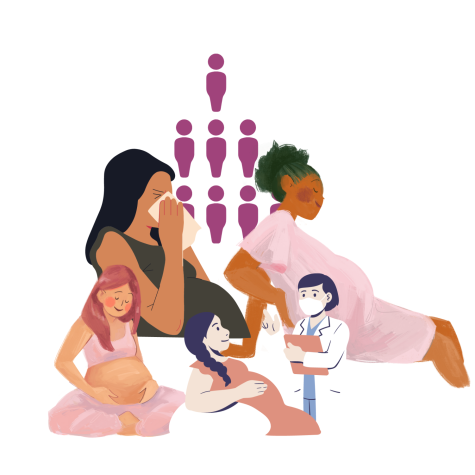Celebrity pregnancy obsessions reveal jarring realities of unrealistic gender expectations
Celebrities are all the craze these days. Especially when it comes to life-changing announcements, such as engagement, marriage, or pregnancy. In particular, singer Rihanna’s pregnancy has been all the talk following her recent announcement on Instagram.
Media outlets everywhere jumped at the sound to report the news. The singer’s announcement prompted plenty of conversation surrounding the due date, the gender, people’s suspicions, and of course the never-ending question: Where is the album?
Parasocial relationships
Some feel a deep connection towards celebrities such as Rihanna and therefore that connection extends to their pregnancies. Although never having met, spoken, or seen her in person, the connection is still strong. Pregnancy was formerly seen as a condition rather than something to be celebrated or excited about but now according to Renee Cramer, author of Pregnant with the Stars, it has become “public property”.
Similarly in a parasocial relationship, only one person is devoting their time and energy into a relationship with practically a stranger. A parasocial relationship is “an imaginary, one-sided relationship that an individual forms with a public figure whom they do not know personally,” explains Ph.D. licensed clinical psychologist and associate professor of psychology Sally Theran.
Gender Role Socialization
The obsession with pregnancy inherently promotes gender role socialization in terms of the expectations to be traditionally fulfilled during one’s lifetime. Gender role socialization is the idea that based on one’s gender there are specific roles they play in society. Conceptually, gender roles, in general, aim to set society backward in terms of progression of ideals and social norms. Traditionally women have been seen as nurturing, submissive caretakers who are in charge of what happens inside the household. However, that is not the case anymore.

When women cannot ‘meet’ this expectation
This ideal seems unrealistic for everyone. According to the CDC, infertility, the inability to reproduce, is pretty common with about 12 percent of women aged 15 to 44 having difficulty carrying a pregnancy to term in the United States and about 6 percent are unable to get pregnant after one year of conception.
Contrary to popular belief, infertility is not just an issue for women. “In about 35 percent of couples with infertility, a male factor is identified along with a female factor,” says the CDC. In about eight percent of couples with infertility, a male factor is the only identifiable cause.
When women don’t want to ‘meet’ this expectation
Being pregnant is just not for everyone. Not everyone aspires to have children for many different reasons or are unable to support a child physically, financially, or emotionally. According to the United States Census Bureau, 15.2 million, or 16 percent of adults aged 55 and older are childless. These rates among older adults are only expected to increase. In addition, adults without children as a group were more educated than parents with about 38.4 percent who have at least a bachelor’s degree, compared to 30.0 percent of parents. Interestingly, the report found that poverty rates were higher in childless adults than that of parents. About 12 percent of childless adults had family incomes below the poverty line. When it comes to parents, a greater share of mothers had family incomes below the poverty line (10.5 percent) than fathers (7.5 percent).
Whether it’s Rihanna or your next-door neighbor, it is their decision whether or not they decide to have children. It does not have to be everyone’s business. Having children is not realistic for everyone.
Your donation will support the student journalists of Parkdale High School. Your contribution will allow us to cover our annual website hosting costs and publish some printed editions, as well.






